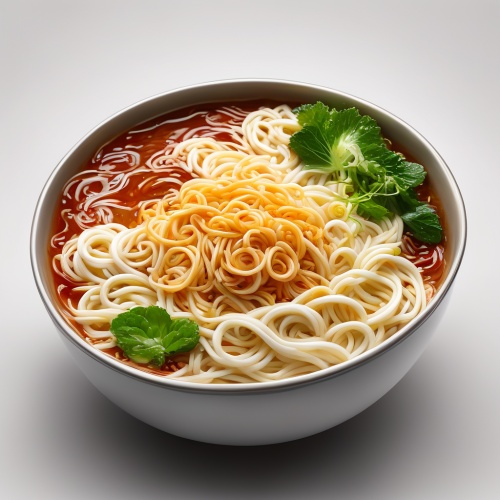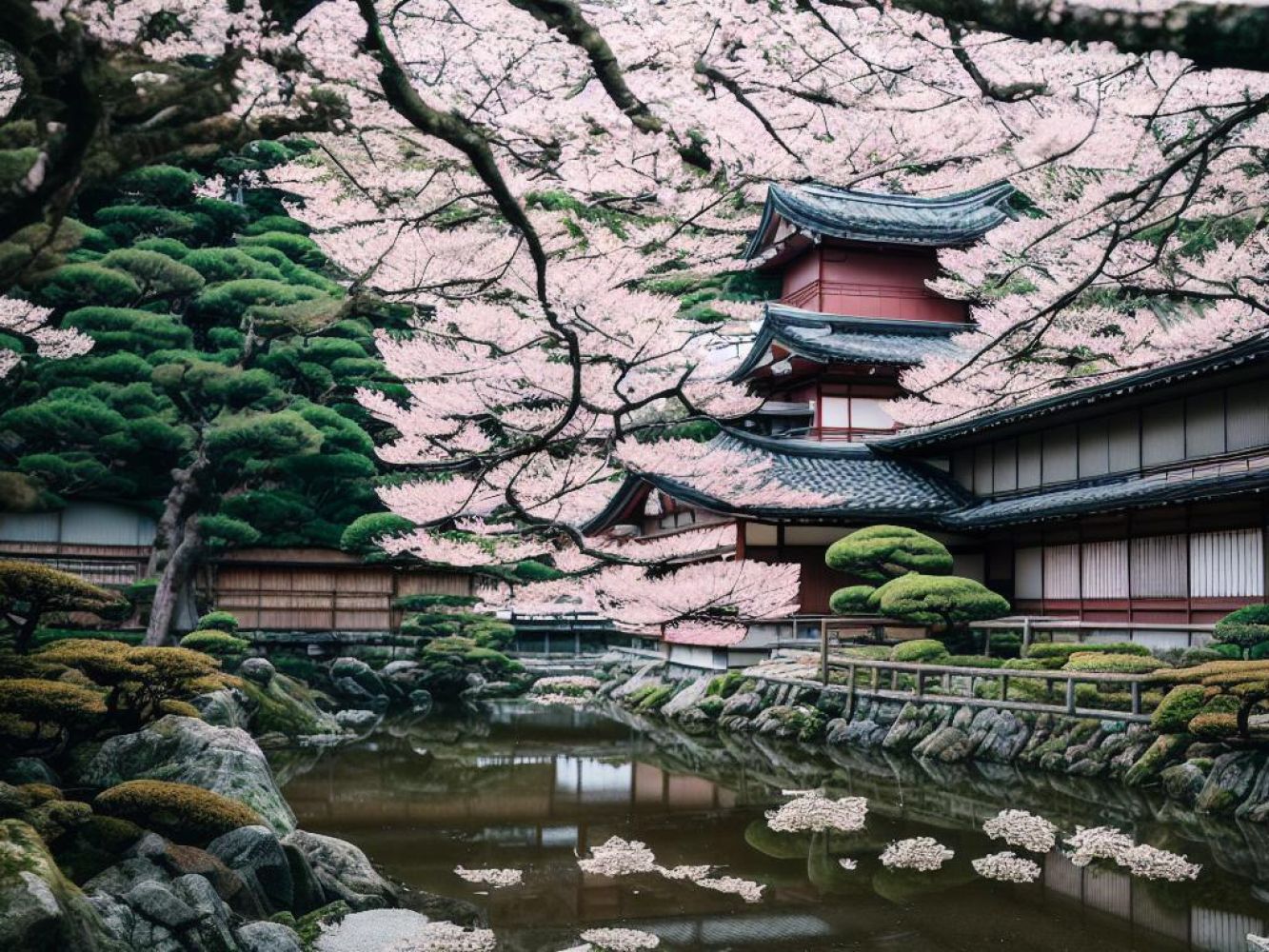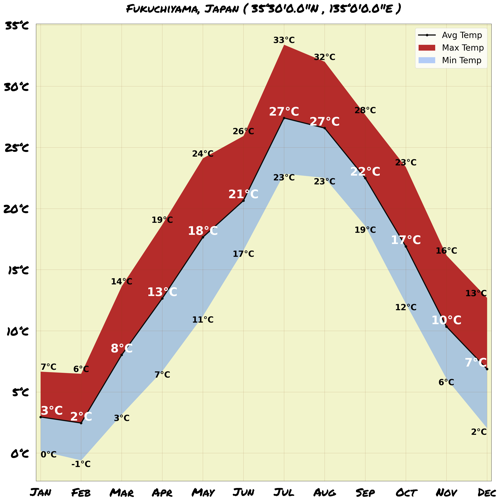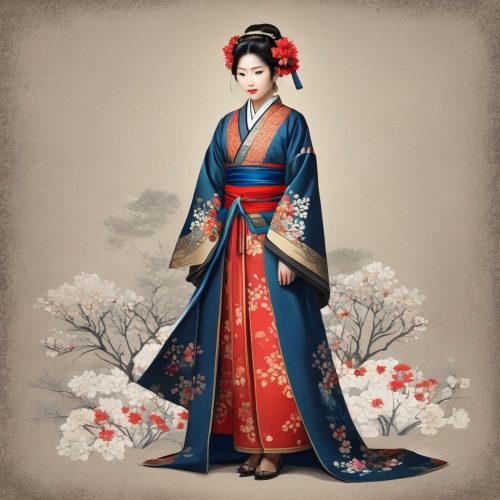Understand
Fukuchiyama, a gateway to the Sanin Region in Japan, boasts a rich history that dates back thousands of years. Once a castle town for 13 generations, it played a significant role in Japan's feudal system. After the abolishment of the feudal system, Fukuchiyama rapidly developed due to its strategic location for Japan's transport routes to the Sea of Japan during the Russo-Japanese War. The area prospered in sericulture and indigo dyeing industries, but these industries have declined over time. Despite the changes, Fukuchiyama has managed to keep its local economy going through industrialization since the 1970s.
Map & Climate
Popular Foods
 Sushi: Sushi is a traditional Japanese dish consisting of vinegared rice served with various toppings, typically fish or seafood. The rice is usually accompanied by a small piece of nori (seaweed) and sometimes features a dab of wasabi, pickled ginger, or soy sauce. There are many variations, including nigiri (hand-pressed sushi), maki (rolled sushi), and sashimi (slices of raw fish).
Sushi: Sushi is a traditional Japanese dish consisting of vinegared rice served with various toppings, typically fish or seafood. The rice is usually accompanied by a small piece of nori (seaweed) and sometimes features a dab of wasabi, pickled ginger, or soy sauce. There are many variations, including nigiri (hand-pressed sushi), maki (rolled sushi), and sashimi (slices of raw fish). Ramen: Ramen is a widely popular soup dish in Japan that includes Chinese-style wheat noodles served in a meat or fish-based broth. It is often garnished with ingredients such as pork, dried seaweed, menma (fermented soybean paste), scallions, and miso paste. The dish can be found in various styles, including tonkotsu (pork bone broth), shoyu (soy sauce broth), and miso.
Ramen: Ramen is a widely popular soup dish in Japan that includes Chinese-style wheat noodles served in a meat or fish-based broth. It is often garnished with ingredients such as pork, dried seaweed, menma (fermented soybean paste), scallions, and miso paste. The dish can be found in various styles, including tonkotsu (pork bone broth), shoyu (soy sauce broth), and miso. Tempura: Tempura is a deep-fried dish where seafood, vegetables, or mushrooms are battered and then cooked in hot oil. The light, crispy batter turns golden brown and creates a contrast with the soft textures of the ingredients inside. Traditional tempura elements include shrimp, sweet potato, pumpkin, spinach, and green beans. It is typically served with a dipping sauce made from soy sauce, Mirin, and dashi.
Tempura: Tempura is a deep-fried dish where seafood, vegetables, or mushrooms are battered and then cooked in hot oil. The light, crispy batter turns golden brown and creates a contrast with the soft textures of the ingredients inside. Traditional tempura elements include shrimp, sweet potato, pumpkin, spinach, and green beans. It is typically served with a dipping sauce made from soy sauce, Mirin, and dashi.




Comments
NO COMMENTS